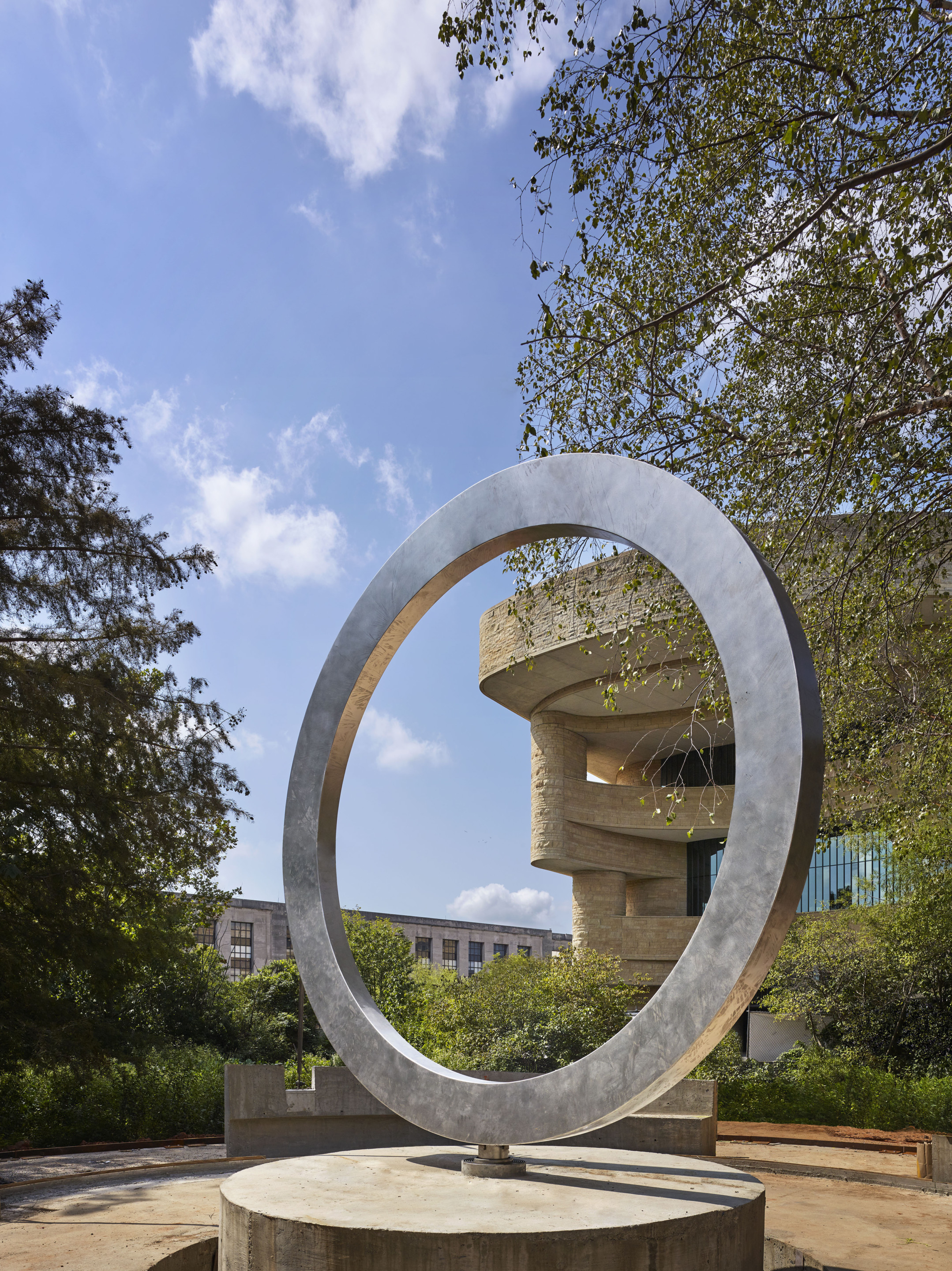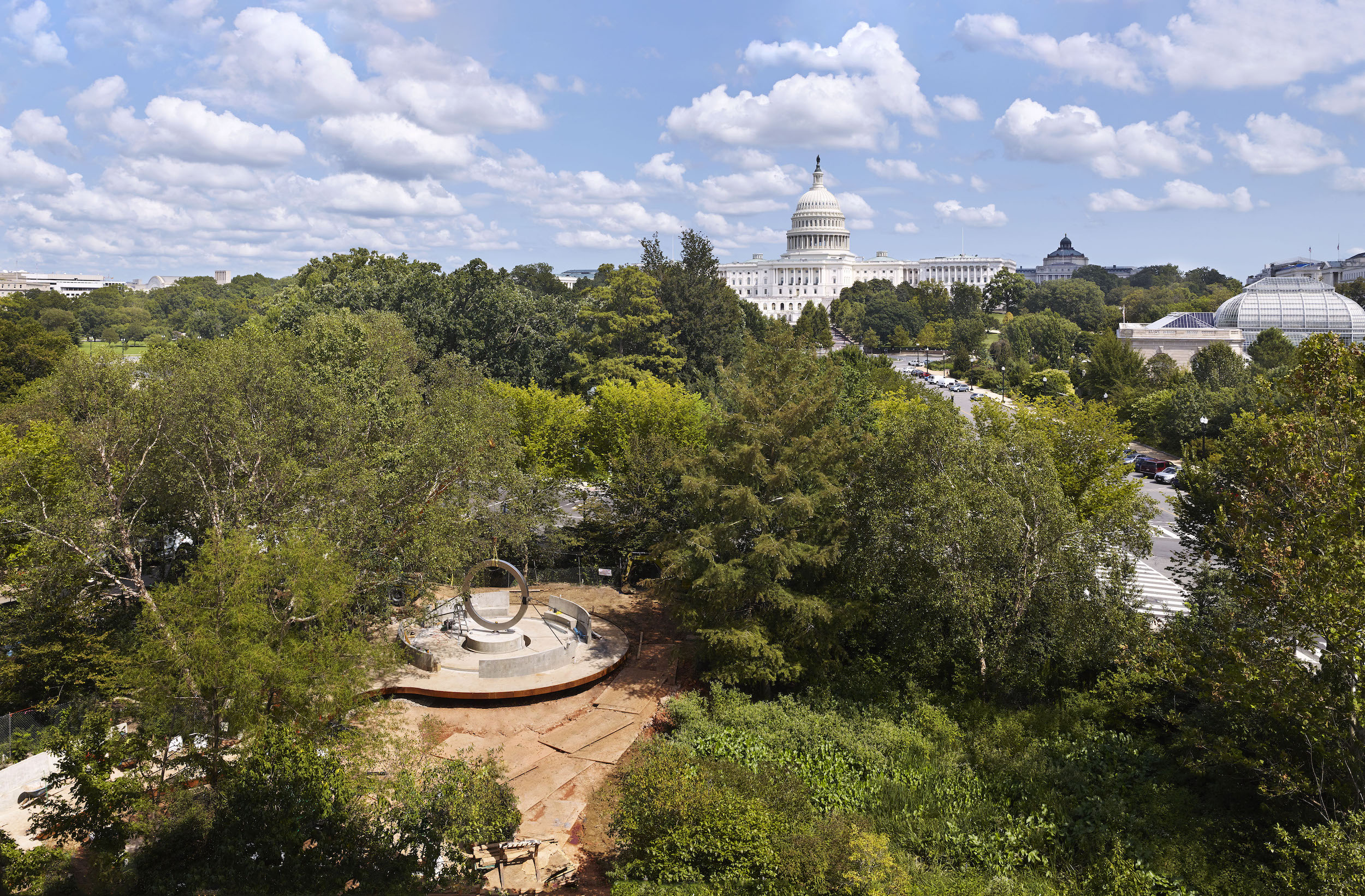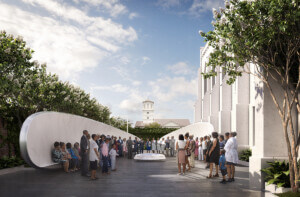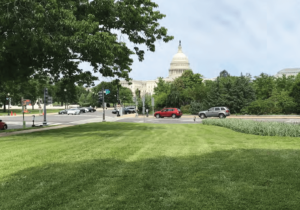The National Native American Veterans Memorial was officially unveiled to the public today on the grounds of the Smithsonian National Museum of the American Indian (NMAI) in Washington, D.C. It is the first national landmark in the United States capital to pay tribute to the countless American Indians, Alaska Natives, and native Hawaiians who have served in the U.S. military throughout the decades.
Unlike the museum itself, which reopened on September 25 and is admitting guests via a timed-entry pass system during the coronavirus pandemic, the National Mall-adjacent memorial, which was commissioned by Congress to give “all Americans the opportunity to learn of the proud and courageous tradition of service of Native Americans in the Armed Forces of the United States,” is publicly accessible 24 hours a day with no advance ticketing required.

Taking the form of a large stainless-steel circle atop a low-slung carved stone drum, the memorial was designed by Harvey Pratt, a multimedia artist, Marine Corps Vietnam veteran, and member of the Arapaho and Cheyenne Tribes of Oklahoma. Based in Oklahoma, Pratt is also a nationally renowned retired forensic artist whose expertise has been tapped for a number of headline-grabbing murder cases (and Bigfoot research).
Oklahoma City-based Butzer Architects and Urbanism served as design partner alongside Pratt on the project, which has been in the works since 2015 following the establishment of a memorial advisory committee formed by the museum alongside the National Congress of American Indians and other Native organizations. Following 35 input-seeking community consultation sessions held across the country, an international design competition was hosted by the museum in 2017. Pratt’s memorial proposal, Warrior’s Circle of Honor, was ultimately selected from a shortlist of six concepts the following year by the competition jury.
Encircled by benches for a contemplative congregation and quiet respite, Pratt’s design also incorporates a water element that flows continuously from the drum for ceremonial purposes. Small fires can also be lit at the base of the circle for ceremonies. The memorial is approachable from four different directions via a walkway dubbed the Path of Harmony, which itself is accessible via a larger walkway, the Path of Life, that curves around a tranquil, tree-studded landscape just east of the museum building. The circular site also features a quartet of spears where family members, fellow veterans, and tribal leaders can affix prayer ties. An audio component with a loop of thirteen Native American veteran songs from the Ojibwe, Menominee, Blackfeet, Ho-Chunk, Kiowa, and Lakota Nations can be heard playing at the memorial.

The memorial’s opening was marked by a virtual message shared on the NMAI website and Youtube channel honoring the sacrifice of Native American veterans and their families. An in-person dedication ceremony as well as a veterans’ procession will be held at a later date.
“The National Native American Veterans Memorial will serve as a reminder to the nation and the world of the service and sacrifice of Native American, Alaska Native and Native Hawaiian veterans,” said Kevin Gover, director of the NMAI, in a statement shared by the Smithsonian. “Native Americans have always answered the call to serve, and this memorial is a fitting tribute to their patriotism and deep commitment to this country.”
Coinciding with the opening of the memorial, the NMAI has published Why We Serve: Native Americans in the United States Armed Forces. The 240-page tome explores the Native American community’s long and rich history of service. Designed by Seattle-based Jones & Jones Architects and Landscape Architects along with SmithGroup, Polshek Partnership Architects, Lou Weller (Caddo), the Native American Design Collaborative, and a number of Native American design consultants, the NMAI opened in 2004 in a five-story curvilinear building resembling a wind-worn rock formation.











